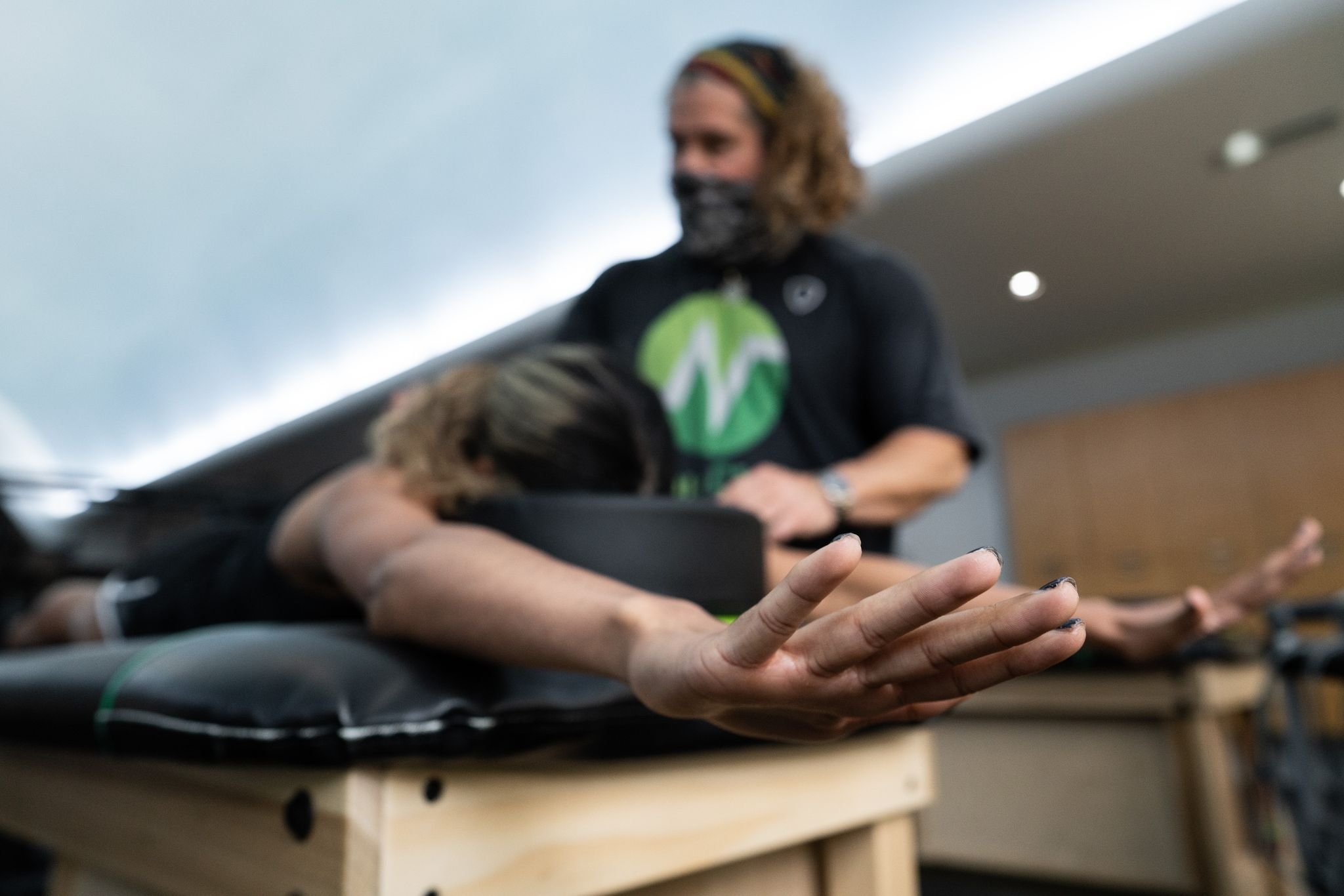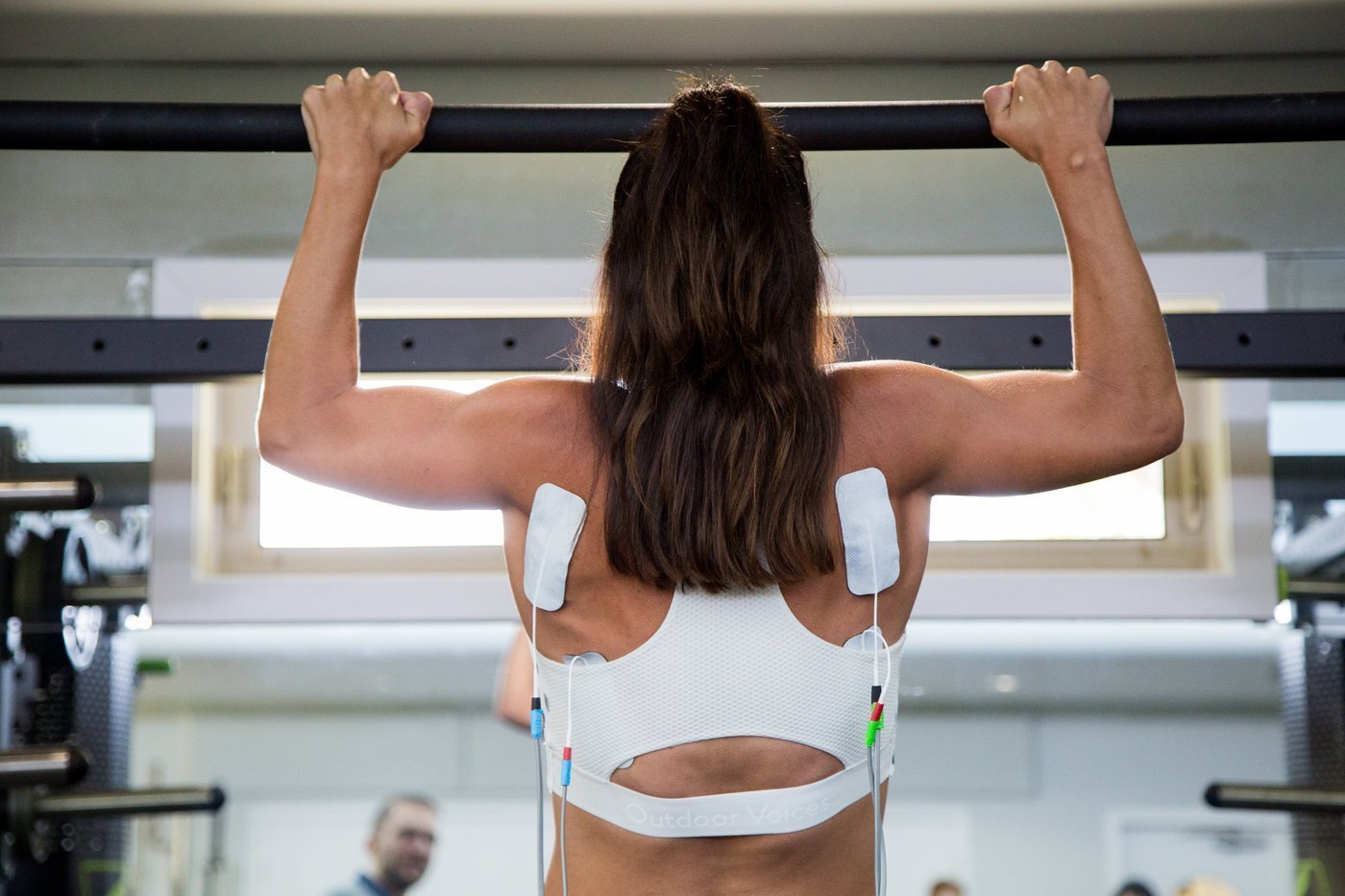In last week’s blog, we explored the Performance Pyramid for endurance athletes. This week we want to briefly explore breathing, fatigue and endurance before we focus on The Performance Pyramid for team sport athletes.
Hand in hand with basic movement proficiency, breathing is another important consideration for endurance athletes. If a runner is hunched over, neglecting their form, and panting throughout a workout, they’re basically training their body to enter and remain in a fight-or-flight state. In the process, they’re also triggering a fatigue response in the brain.
For endurance athletes it’s important to understand how fatigue works.
Fatigue is actually a governor—a limiting influence—imposed by the brain. Again, since the brain is oriented first and foremost toward survival and protection, it automatically limits endurance or muscle output.
In an endurance context, the brain’s main concern is that the body will run out of energy (or overheat) if athletes exert themselves too much or for too long. As a result, the brain reduces muscle output in order to conserve oxygen and energy, which results in fatigue.¹
So how do endurance athletes keep fatigue from setting in?
It starts with changing their neurological inputs, especially when it comes to breathing. The simple act of breathing through the nose, even during a hard workout, helps the nervous system handle greater levels of challenge while staying in a healthier, more parasympathetic state.
Breathing through the nose also helps counter the “respiratory muscle metaboreflex,” a phenomenon that describes how increasing blood pressure and fatigue in the diaphragm reduce blood flow to the peripheral muscles.
Since performance tends to suffer when the breathing muscles themselves get fatigued, improving strength and endurance in the diaphragm can have a significant positive impact on performance. Practicing nose breathing during exercise is one of the best ways to strengthen the diaphragm, as is breathing against resistance (a.k.a inspiratory muscle training).²
In the meantime, it’s important to understand that slowing down the breath rate and breathing from the diaphragm during intense training can actually change an athlete’s neurological programming. When an athlete learns to slow their breathing at a point where they might have felt fatigued in the past, it sends a signal to the brain that they’re not in a life-or-death situation. As a result, the brain doesn’t try to limit or protect the body by sending out fatigue signals.
THE PERFORMANCE PYRAMID FOR TEAM SPORT ATHLETES
Team sport athletes need a specific combination of movement proficiency, strength, speed, and endurance in addition to their sport-specific skills. The challenge is how to organize training in a way that builds all these traits to support optimal performance.
More than any other type of athlete, team sport athletes need to invest significant time and effort into mastering skills related to their sport, including things like dribbling, shooting, and passing, along with strategy and tactics. What’s the best way for these athletes to weave their skill work into their overall training plan, along with all the other levels of the performance pyramid?
For many team sport athletes, periodization is a framework that’s often used to guide training. In its traditional form, periodization is a systematic approach to training planning designed to help athletes reach peak condition within a specific time frame.
One problem with the traditional periodization model is that it assumes all athletes respond the same way to the same training. However, there’s a large body of research that shows this is not the case and that individual responses to the same training can vary widely.³
Because one size does not fit all when it comes to periodization, we like to take a holistic approach at NeuFit. Looking at the body as an entire system, our approach to training integrates all four levels of the performance pyramid. It also involves continuously monitoring an athlete’s response to training.
Approaches to periodization or deciding when to work on different parts of the performance pyramid, vary depending on the level and development of an athlete. For beginners, a “parallel” model of periodization, in which they train simultaneously in multiple areas, is often the best approach. Why? Beginners are generally more responsive to training and can shift more easily between the different attributes of performance.
As athletes grow more advanced, they need more significant stimuli to improve performance in a particular area. For advanced or professional athletes, a “serial” or “block” approach to periodization, in which training focuses on individual attributes of performance, is usually more effective.4
How does this look in practice?
Sometimes, it involves a two- to four-week block in which athletes concentrate on strength, endurance, or speed, paying minimal attention to other aspects of performance.
Even if we adjust periodization training to fit an individual athlete’s needs, we need to keep in mind that both “parallel” and “block” approaches are designed for athletes training for a specific event, like a track meet or a powerlifting competition.
These periodization strategies don’t necessarily make sense for a professional hockey player like Brent Burns, who must perform at an elite level over an eighty-two-game season. In Brent’s case, and for other athletes competing at his level, it’s impossible to implement a “block” periodization strategy during the season because he can’t pause to focus on a single aspect of his performance. (Though it’s possible to do it in the off-season.) Instead, it’s crucial for him to work systematically to maintain (or even improve) all the key areas of performance at all times.
Most—but not all—of Brent’s endurance, speed, strength, and skill work is naturally incorporated into practices and games. For him and for other athletes in his position, a big part of successfully navigating a long season involves balancing recovery and accumulated fatigue from practices, games, and travel (and all the sleep and nutrition challenges that come with travel) with additional training.
“Everybody’s goal at the start of the year is to play every game,” he said. “But there’s a lot of work that goes into making that happen. Your body can maintain its hockey playing, you think. But your strength levels and everything else just deteriorate through the year.”
After games, for example, team sport athletes like Brent experience fatigue and reductions in performance depending on their playing time, the amount of physical contact, and other factors.5 These deficits can sometimes last from forty-eight to seventy-two hours.6
To ease the wear and tear on his body between games, Brent used the Neubie® electrical stimulation device to stimulate the vagus nerve, which helped increase his parasympathetic nervous system activity, accelerate his recovery, and restore his baseline function.
In addition, he was able to incorporate quick (fifteen- to thirty-minute) training sessions with the Neubie device to keep his strength, speed, mobility, and endurance at peak levels throughout the season. Toward the end of the season, when the cumulative effects of fatigue and injury typically slow down most NHL players, his body still felt fresh, “like it had in my first few seasons.”
Throughout the season, Brent also learned to use a series of indicators to monitor the health of his nervous system and further improve his performance. These indicators—which played a key role in helping him decide when to train and when to recover—are the subject of our upcoming blogs.
Let’s charge forward to better outcomes!

